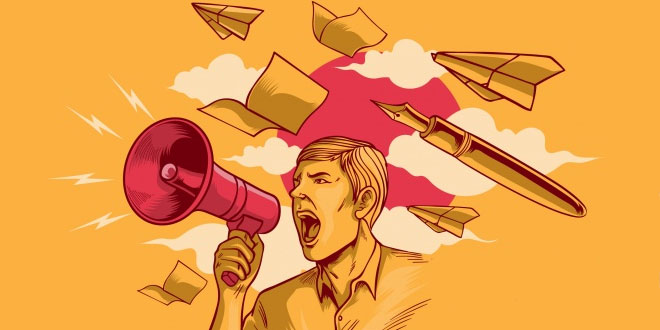Popular Struggles & Movements: Page [III]
Question: What is the different between a pressure group and people’s movement?
Answer: The people’s movement is used to describe many form of collective action e.g. Narmada Bachao Andolan, Movement, Women’s movement etc., The movements attempt to influence politics rather than directly taking part in electoral competition.
Unlike interest groups, the movements have a loose organisation. Their decision making is more informal & flexible. They depend much more on spontaneous (immediate) mass participation unlike an interest group.
Question: Explain the 2 types of groups with example.
Answer:
- Sectional Interest groups: They are interest groups who want to promote the interest, betterment & well-being of particular section of the society. They work for the betterment of their members only e.g: Trade Unions, lawyers, doctors & teacher association. They are sectional because they represent a section of society.
- Public interest groups: They are also called promotional groups. They promote collective rather than selective good. They represent some common or general interests. The members of the organisation may not benefit from it. E.g. In Bolivia FEDECOR is an example and in Nepal we had the human rights organisations. These organisations concern is for the entire society.
Question: What are the 2 types of Movement groups. Give example.
Answer:
- Issue specific movement: They seek to achieve a single objective within a limited time frame e.g. The Nepalese movement was with a specific objective to reverse the king’s order’s. In India Narmada Andolan was with a specific issue to stop the construction of Sardar Sarovar Dam on Narmada river.
- General Movements: They seek to achieve a broad goal in the very long term. It involves more than one issue. Example: The environmental movement and women’s movement.
Question: In what ways do pressure groups & movements exert influence on politics?
Answer: The pressure groups & movements exert influence on politic in various ways.
- They try to gain public support for their goals by carrying out information campaigns organizing meetings, file petitions etc. They also influence the media.
- They organise protest activity like strikes to force govt. to take note of their demands.
- Business groups often employ professional lobbyists or sponsor expensive advertisement.
So they not directly engage in party politics but they seek to put influence on political parties.
Question: Describe the forms of relationship between pressure groups & political parties.
Answer:
- In some cases the pressure groups are either formal or led by leaders of political parties or act as extended (longer) arms of political party.
- Sometimes political parties emerge (come) out of movements e.g: The Assam movement led to the formation of Asom Gana Parishad.
- Movement groups have raised new issues that have been taken up by political parties. Most of the new leaders of political parties comes from interest or movement groups.
Question: Discuss the positive & negative aspects of pressure groups.
Answer:
- Negative aspects: Sometimes it is not healthy groups promote interest of one section to have in influence in democracy. A democracy must look after the interest of all not just one section. These groups wield power without responsibility. Political parties have to face people in elections but these groups are not accountable to people. Some times pressure groups with less public support but lots of money can hijack (get control illegally) public discussion.
- Positive aspects: Pressure groups & movements have deepened democracy. They remind the govt. of the needs & concerns of the ordinary citizens. They help in balance of power & accommodation of conflicting interests.
Question: What is SPA? Explain any two demands of the SPA?
Answer: It was Seven Party Alliance formed to restore democracy in Nepal.
The demands of SPA were as follows:
- Restoration of the Parliament.
- Transfer of power to an all party government.
- Formation of a new Constituent Assembly.
Question:Mention any three demands of the people of Nepal during the movement of 2006.
Answer:
- Restoration of Parliament.
- Power to an all party government.
- A new Constituent Assembly.
Question: What was the outcome of Nepal’s second movement for democracy?
Answer:
- The king was forced to concede all the three demands of the people i.e., restoration of Parliament, power to all party government and formation of new Constituent Assembly.
- The restored Parliament passed new laws taking away most of the powers of the powers of the king.
- The SPA and the Maoists came to an understanding about how the new Constituent Assembly was to be elected.
 Class Notes NCERT Solutions for CBSE Students
Class Notes NCERT Solutions for CBSE Students





